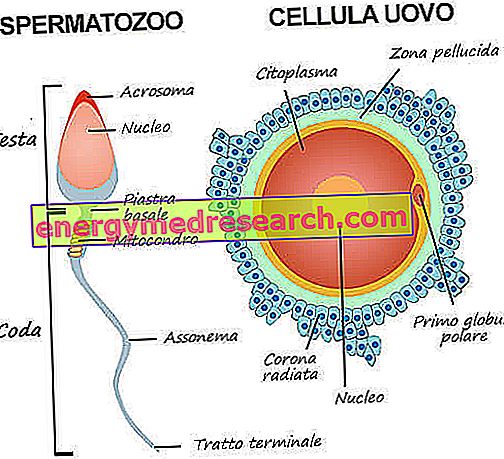Wheat and rye
Triticale is a "last generation" hybrid, intentionally created by combining the genomes of wheat with those of rye: we are talking about an innovative cereal, forged by man overcoming the laws dictated by nature.
Although the triticale was created already in the late 1800s, only recently has large-scale cultivation taken hold in Europe.

The crosses between wheat and rye have given rise to numerous varieties of triticale: just to give an example, an octaploid variety was created consisting of 56 chromosomes crossing an hexaploid wheat with a diploid rye.
On the market triticale varieties are sold obtained by crossing two hybrids: in simple words, second generation F2 hybrids are marketed.
Botanical analysis
As can be guessed, triticale varieties can show a marked morphological variability, directly correlated to the species and to the varieties of wheat and rye combined to create the hybrid.
Compared to wheat, the triticale leaves appear wider and full of stomata; the culm is large and empty.
The ears are quite large and produce a variable number of kernels (60-150).
When compared to wheat and rye “parents”, the growth capacity of triticale is rather slow.
Benefits of being hybrid
Triticale, being a hybrid between rye and wheat, clearly has characteristics similar to one and the other cereal.
The triticale varieties are different according to market needs: in the Americas, for example, triticale tends to be more similar to wheat, while Eastern European countries prefer a triticale similar to rye.
The possibility of creating hybrids is an element of extraordinary importance, because in this way it is possible to capture the "best" characters of several cereals (in this specific case) and to combine them into a single species.
Taking advantage of plant genetics, it is possible to originate a variety of triticale characterized by a good percentage of lysine (amino acid characteristic of rye) and a high protein content: just think that in wheat lysine is the limiting factor from the nutritional point of view. Through the combination with rye, the triticale hybrid is obtained which, although it is made up partly of wheat, is also abundant in lysine [taken from Genetics concepts, by William S. Klug, Charlotte A. Spencer]
But the positive aspects are not yet finished: the triticale contains both the particular propensity for bread-making (a characteristic characteristic of wheat), and resistance and adaptability to the harsh climate (a distinctive element of rye).
Comparison with other cereals
Let us now summarize the main characteristics that define the triticale profile, comparing it with the other cereals:
- Triticale resists quite well to cold temperatures, although rye is much more resistant
- Triticale is suitable for soils with a low degree of fertility and sandy, just like rye
- Wheat requires a lot of water: the triticale, being half rye, needs less water
- Triticale is very resistant to salinity, much better than barley
- Triticale responds less to nitrogen than wheat: it is no coincidence that particular attention must be paid to nitrogen doses, given that they could favor loosening.
[taken from www.agraria.org]
Nutritional composition
Triticale provides 336 kcal per 100 grams
Triticale is made up of about 67% of carbohydrates, 19.7% of proteins, 3.1% of fibers and 1.6% of fats; the remaining 8.6% is water.
Among the mineral salts we find calcium (traces) and phosphorus (traces); among the amino acids, those present in greater quantities are leucine (1.23%), valine (0.93%), phenylalanine (0.85%) and arginine (0.80%).
[The values are calculated taking as a reference 100 grams of cereal, dry matter. The aforementioned nutritional composition is taken from the site www.hort.purdue.edu]
Summary
Triticale: to fix the concepts
| Triticale | Hybrid "last generation" intentionally created by combining the genomes of wheat with those of rye |
| Triticale: etymology of the term | The triticale name is composed by the fusion of two words: root = botanical genus of wheat ( Triticum ) + ending = genus of rye ( Secale ) |
| Triticale variety | Many: crosses between multiple varieties of wheat and rye Eg. Octaploid variety with 56 chromosomes: hexaploid wheat + diploid rye |
| Triticale in commerce | Second generation F2 hybrids are marketed |
| Triticale: botanical analysis |
|
| Triticale: the advantages of being a hybrid | Hybrid = has characteristics similar to one and the other cereal
|
| Triticale: comparison with other cereals | Triticale:
|
| Triticale: nutritional composition | 336 Kcal / 100 grams
Amino acids in greater quantities: leucine, valine, phenylalanine, arginine |



